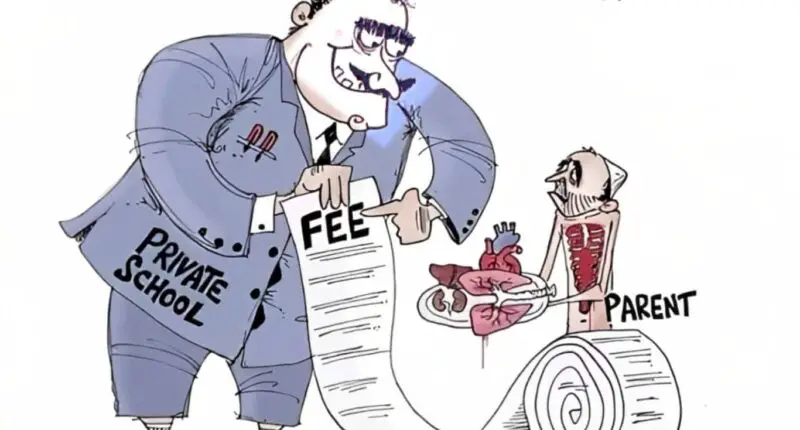Over the past few decades, the education industry has undergone a significant transformation as it is increasingly treated as a commodity rather than a public good. With the rise of for-profit educational institutions, growing tuition costs, and a focus on marketable skills, education is becoming more like a business. In this article, we will explore why education is turning into a business and its potential implications for students, educators, and society. While some argue that the marketization of education is necessary to improve access and quality, others fear that it risks eroding the fundamental values and purposes of education as a public good.
Why Education is Turning into a Business?
Government funding

Declining government funding for education has forced many educational institutions to seek alternative sources of revenue to cover their expenses. This includes increasing tuition costs for students, which can make education less affordable and accessible for many. Some educational institutions have turned to for-profit models, where the focus is on generating profits rather than providing quality education. While this model can provide financial stability for the institution, it can also lead to a focus on revenue-generating programs and degrees, rather than educational outcomes and student success. The decline in government funding for education has played a significant role in the commercialization of education.
Corporate interests

Increasing influence of corporate interests in educational policy and decision-making can be a concerning factor in the commercialization of education. When corporations have a say in educational policy and decision-making, they can push for market-oriented solutions that prioritize profits over educational outcomes and the public good. This can lead to a narrowing of educational goals, such as an emphasis on job training over holistic education that fosters critical thinking and personal growth. It can undermine the public value of education as a common good, by reducing it to a commodity that can be bought and sold. The role of corporate interests in education policy and decision-making is a complex issue with both potential benefits and drawbacks, and it requires careful consideration and scrutiny to ensure that the public interest is protected.
Financial targets

Focus on profits and marketability in for-profit educational institutions can sometimes lead to a prioritization of financial gain over educational outcomes, which can lead to lower quality education for students. In such institutions, the pressure to meet financial targets can lead to cutting costs in areas that are necessary for quality education, such as hiring experienced and qualified teachers, providing high-quality resources and infrastructure, and investing in research and development.
For-profit educational institutions may prioritize marketable skills and career outcomes over more holistic education that fosters critical thinking, personal growth, and a broader understanding of the world. Such a focus can lead to a narrowing of educational goals, which may not provide students with the well-rounded education that is necessary for success in the modern world. In contrast, non-profit educational institutions may prioritize educational quality over financial gain and are often more focused on creating well-rounded individuals that can contribute positively to society.
Data analytics

Data analytics can be used to identify areas of profitability and to optimize resource allocation to maximize revenue. For example, an educational institution can use data analytics to identify courses with high demand and allocate resources to these areas to maximize revenue. This may lead to a focus on courses that generate the most profit, rather than courses that are important for a well-rounded education.
Business models in education can lead to a focus on cost-cutting and profit maximization, which may not be in the best interest of students. When education is treated as a business, institutions may prioritize financial gain over educational outcomes, leading to a reduction in the quality of education.
Globalization

As the education market becomes increasingly globalized, educational institutions are facing new challenges and opportunities. On the one hand, globalization provides institutions with access to a much larger pool of potential students, which can lead to increased revenue and growth. On the other hand, increased competition means that institutions need to differentiate themselves from their competitors and offer unique value propositions to attract students.
To compete in the global education market, institutions may need to tailor their programs and services to meet the needs of international students. This may involve offering language support services, cultural orientation programs, and other resources that help international students adjust to a new educational and cultural environment. It may also require investing in technology and online learning platforms that enable students to access educational resources from anywhere in the world.
Globalization of the education market can also lead to a focus on profit and efficiency over educational outcomes. Institutions may be more inclined to prioritize financial gain over educational quality to attract more students and generate more revenue. This can lead to a reduction in the quality of education, which may negatively affect the students’ learning experience.
Commercialization

The commercialization of education can lead to a more standardized and homogenized approach to education. Educational institutions may prioritize outcomes and performance metrics over more diverse approaches to education that foster innovation and creativity. Standardization in education is often driven by the need to quantify and measure educational outcomes. Standardized testing and performance metrics can be used to evaluate the effectiveness of educational programs, but they may also lead to a narrow focus on a limited set of skills and knowledge. In this model, education is seen as a means to an end, with the goal being to prepare students for specific careers.
The focus on standardization can also limit the diversity of educational content and perspectives. When educational institutions prioritize outcomes and performance metrics, they may be less inclined to offer courses and programs that do not fit within this model. This can limit students’ exposure to new ideas and ways of thinking, which can be detrimental to their intellectual and personal growth.
Ideology

The commodification of education can lead to the commercialization of knowledge and ideas, which can undermine the public value of education as a means of fostering personal and societal growth and promoting the common good. When education is reduced to a commodity that can be bought and sold, we risk losing sight of its fundamental purpose and value in society.
The ideology of education as a commodity is driven by the idea that education is a means to an end, rather than an end in itself. In this model, education is seen as a tool for achieving specific outcomes, such as improved employability, increased earnings, and social mobility. The focus on outcomes can be beneficial in many ways, but it can also lead to a narrow and instrumental view of education that undervalues its broader societal and personal benefits.
When education is reduced to a commodity, it can also become a tool for reinforcing existing social and economic hierarchies. Education can be used to reinforce existing power structures, rather than challenge them, by perpetuating dominant cultural and economic norms. This can limit the diversity of ideas and perspectives in education and undermine its potential to promote social change.
Also Read: AI in Education: Benefits and Limitations



